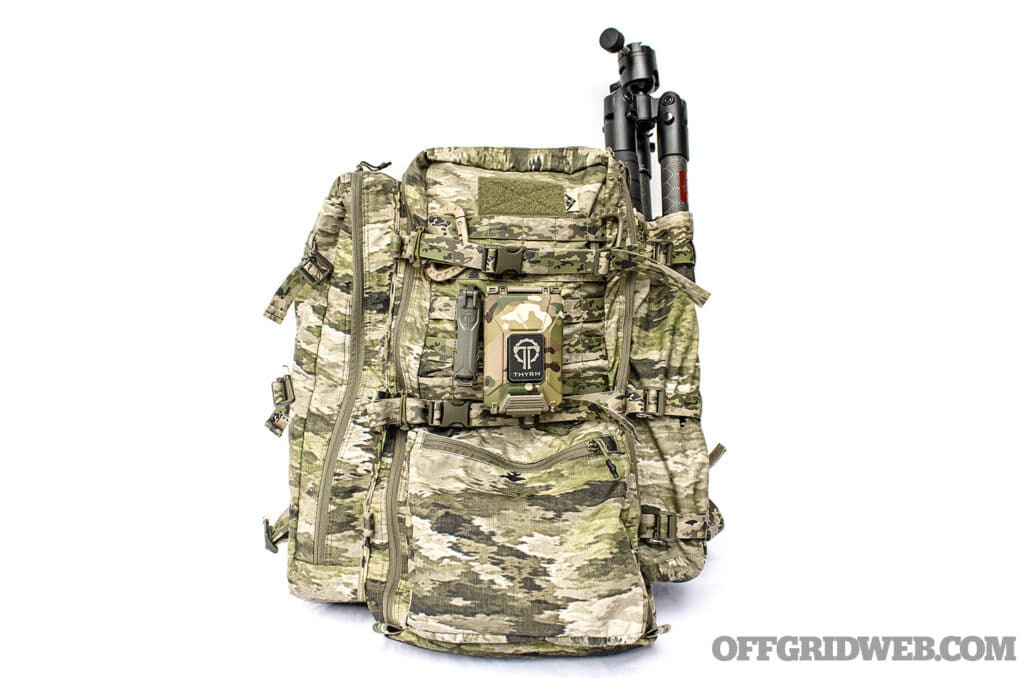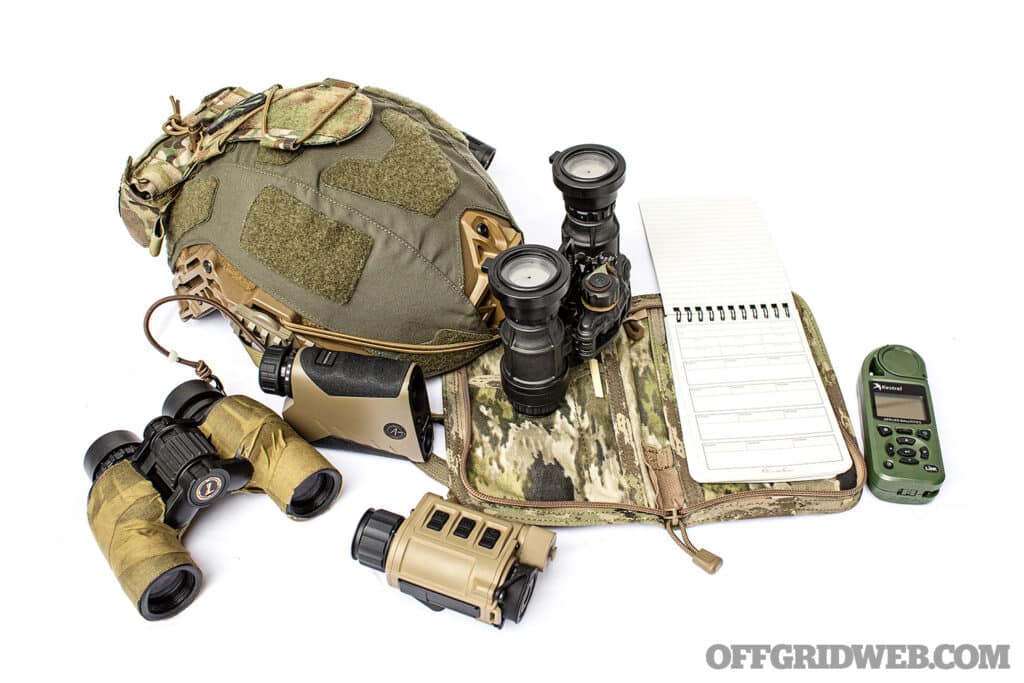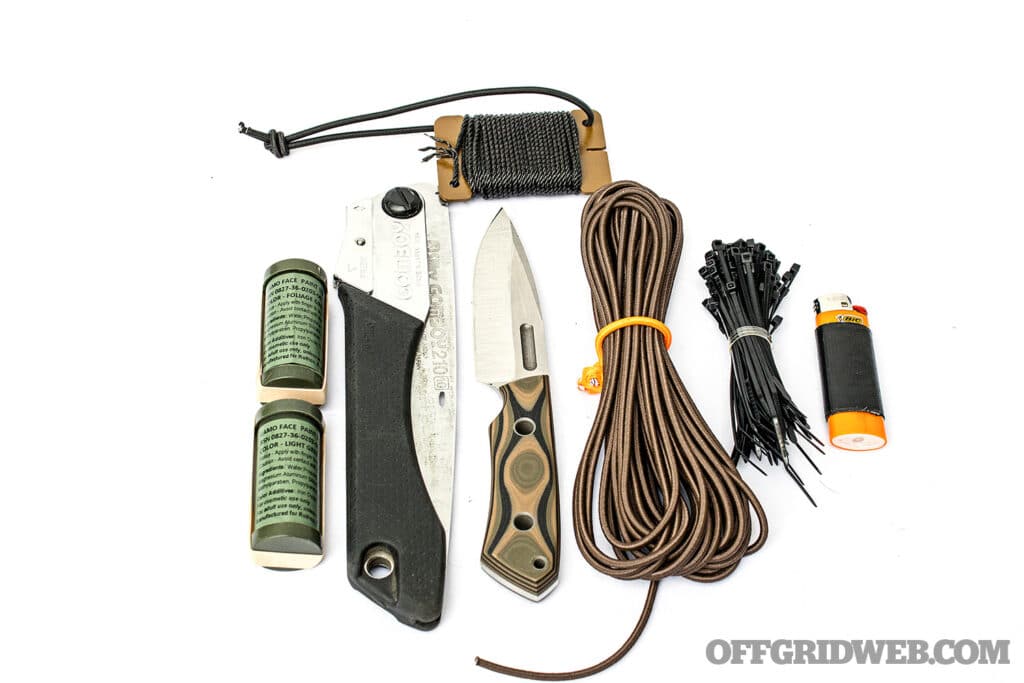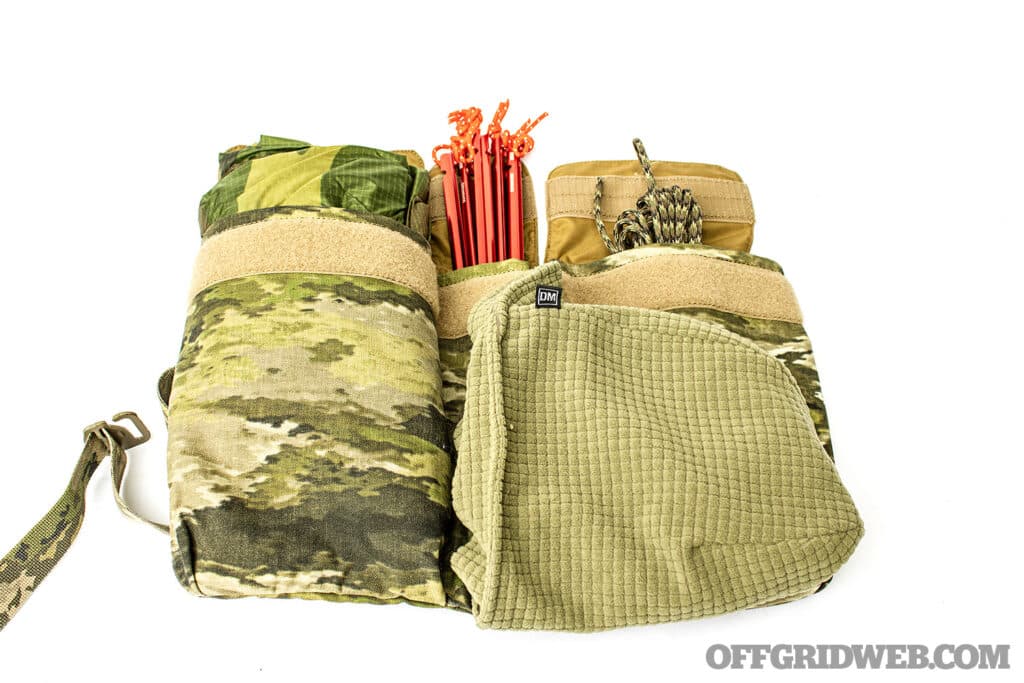Over the last several years, recce has become a popular topic. Recce, short for reconnaissance, is simply information gathering or surveying of an area. This is typically thought of in a military role, but it’s also useful for hunters or even for checking a resupply or escape route during a disaster scenario. Recce is meant to be non-kinetic — if you encounter a threat, the goal is to break contact ASAP — and low visibility. This means minimal gear and austere conditions. To successfully complete the task of infiltrating an area, gathering information, and exfiltrating, you’ll need highly capable gear and a good system for carrying it, such as the Low Vis Gear ISR Pack.

Low Vis Gear ISR Pack
The Low Vis Gear ISR pack (Intelligence, Surveillance, Reconnaissance) is a purpose-driven midsized pack with approximately 35 liters internal capacity. The focus of the ISR pack is to carry a tripod and spotting scope along with other mission-essential gear for information-gathering missions. A large, padded spotting scope pocket that runs the entire height of the pack has three tension straps to keep your valuable optic safe and from shifting as you move. On the opposite side of the pack is a sleeve that also runs the height of the pack and has three tension straps. This sleeve is for packing out your tripod and helping to keep your visual and auditory signatures low. The main compartment is large enough for everything you will need to be successful in the field while prompting you to be selective so as not to overload the pack.
The air mesh padded shoulder straps and waist belt adjust to give you custom comfort while assisting you in carrying 30 to 60 pounds. A frame sheet with aluminum crossover stays and 3D spacer mesh at the lumbar and in the mid-back make up the support structure. The ISR is offered in A-TACS IX, A-TACS AU Terrain, OD green, or MultiCam.

Above: With binoculars, night vision, and a thermal monocular, it’s easy to scout hide sites and track game animals, day or night.
ISR Electronics
InfiRay Outdoor Rico RH25: This is one of the most versatile thermal optics on the market right now. The RH25 can be helmet-mounted, weapon-mounted, or used as a handheld device. I like having this as an addition to my LPVO on my carbine, but it sees the most use as a handheld for doing quick sweeps of an area. It picks up thermal images out to 1,300 yards and runs off a rechargeable 18650 battery.
Kestrel 5700: While you probably won’t be firing a shot on a successful ISR mission, it’s a great opportunity to map out good hide sites and vantage points for the future. Having your own weather meter and applied ballistics calculator for long-range applications is a powerful advantage. The 5700 also measures wind speed, air density, humidity, temperature, pressure, and altitude. The ability to connect the Kestrel 5700 to a smartphone, range finder, or computer increases the power this tool brings to the field immensely.
SIG Sauer Kilo 2400 ABS: Much like the Kestrel, a good rangefinder can help you find shooting positions and take the guesswork out of putting rounds on target. The Kilo comes equipped with Applied Ballistic Elite technology to work with the SIG Ballistic App on your smartphone. The monocular is 7x25mm with SpectraCoat anti-reflection coatings which gives great clarity and light transmission. The Kilo body is made of lightweight and tough magnesium, has an adjustable diopter, and binocular-style eyecup as an added touch to aid in comfort of use. This device runs off one CR123 battery.
TNVS: Night vision is a superpower, and the ability to travel in the dark without using a flashlight is an advantage that cannot be underestimated. This specific dual-tube set is particularly handy because you can flip one side up and out of the way to use your eye unassisted or to bring your thermal device up. These NVGs can be handheld like binoculars, but I prefer to mount them to my Team Wendy helmet.
Thyrm Cell Vault: The curse of electronics is that they require power to keep working. I have long been a fan of Thyrm products. The Cell Vault allows me to keep all spare batteries together in one container while keeping the contact points from touching and draining them of energy. Thyrm was insightful enough to make this container watertight with a rubber gasket, MOLLE attachable, and lockable.

Above: Cutting tools provide a means of collecting foliage, and the zip ties and cordage can be used to attach it to gear for camouflage.
ISR Tools
Bradshaw Knife: I am partial to a blade that’s no larger than what’s needed for the job. This Bradshaw blade has a 4-inch D2 blade for edge retention and durability paired with G10 grip scales.
Silky Gomboy: The Gomboy is the go-to folding saw for bushcraft applications. In many information-gathering roles, you’ll be constructing a hide site to observe from, and the Gomboy is the tool you’ll want. A saw keeps your sound signature much lower than that of a hatchet being swung into a tree trunk or a knife being batoned through a fallen limb. The Gomboy 240mm medium punches way above its weight with its 8-inch saw blade and weightless feel.
Fix It Sticks: My kit is an amalgamation of a few separate orders from Fix It Sticks. In this kit, I have everything needed to remove or adjust every nut, bolt, screw, and bit that is in the ISR kit as well as adjusting optics and doing battery swaps. The ratcheting T-handle may or may not be necessary, but I’m glad I have one. The torque limiters are also great to have and worth the added weight.
BOG Deathgrip Infinite: A tripod’s main use in a recce situation is going to be for stabilizing your spotting scope for viewing an area from long distances. The Infinite has an Arca-Swiss mount to accept your spotting scope and can quickly transition to stabilizing a rifle instead.
Leupold SX-2 Alpine: I am partial to angled-body spotting scopes as I find them less physically taxing to use for extended periods, as compared to the straight-bodied versions. The Alpine is a 20-60×80 HD optic that’ll produce a clear view of targets well out to 1,000 yards.
Low Vis Gear Shelter Roll: During an ISR, there isn’t a lot of sleeping going on unless you’re in a team. If you’re lucky enough to be able to get some shuteye, you have to remember that keeping your signature small is paramount. That means a poncho or tarp and maybe a section of a sleeping mat to insulate your body from the ground. I like to keep a poncho, half a dozen titanium stakes, a line kit, bank line, and a few bungee cords in my Shelter Roll.

Above: Clean water is essential to staying healthy in the field. This kit includes several methods of purification.
Medical and Emergency
Dark Angel Medical D.A.R.K.: As with every pack, vehicle, and outbuilding I’ve got, there’s a Dark Angel Medical D.A.R.K. (Direct Action Response Kit). This is considered an IFAK (individual first aid kit) and is attached to the right side of the removable CTR (Close Target Reconnaissance) belt included with the pack. The DARK is a pre-assembled kit with just the right amount of trauma gear to stabilize life-threatening injuries.
WIN Pouch: Lester River Bushcraft designed this smart little kit. WIN is an acronym for “what’s important now?” This is the item I would grab if I had to cut and run. The WIN is a minimalist pouch with two small snap closure pockets and three shock cord tie-down attachment points. There’s also a fire plug attached to the tension strap. In it, there’s a Sawyer Mini water filter, foldable water container, Pull Start emergency fire starter, ferro rod, emergency space blanket, and a small Benchmade Griptilian folding knife.

Above: The LVG Shelter Roll contains a large poncho, stakes, and cordage for protection from inclement weather.
Food and Water: It’s important to keep this as simple as possible. The more you eat and drink, the more you will need to relieve yourself. Drink enough to keep yourself performing smoothly and eat as little as possible. Being hungry for a day or two will not kill you, but crawling out of your hide site to use the head may give away your position, and that would certainly put you in danger of spooking game or in physical danger from an enemy. Water is much more important than food. I carry water via a bladder, 32-ounce Nalgene bottle, and a Grayl water filter bottle.
Miscellaneous Gear: Heavy-duty zip-top bag with assorted zip ties, ranger bands, rubber bands for camouflaging gear, shock cord, BIC lighter, and insect-resistant head net from Sea to Summit has been a lifesaver a few times.
Final Thoughts
Conducting recon is a lonely enterprise. Making sure you’ve got the right tools to complete your assignment in a timely manner is paramount to not being miserable in the field. Take the time required to test and evaluate your gear ahead of the task, rather than finding out the hard way when a tool breaks or an item is missing. Always add a healthy dose of critical thinking and you’ll go far.

Specs
- Make & Model: Low Vis Gear ISR Pack
- Capacity: 35L
- MSRP: $331
- URL: lowvisgear.com
Read More
Don’t miss essential survival insights sign up for Recoil Offgrid's free newsletter today!
Check out our other publications on the web: Recoil | Gun Digest | Blade | RecoilTV | RECOILtv (YouTube)
Editor's Note: This article has been modified from its original version for the web.
The post Bag Drop: Low Vis Gear ISR Pack appeared first on RECOIL OFFGRID.
By: Nick Italiano
Title: Bag Drop: Low Vis Gear ISR Pack
Sourced From: www.offgridweb.com/gear/bag-drop-low-vis-gear-isr-pack/
Published Date: Fri, 04 Oct 2024 11:00:07 +0000
------------------------
Did you miss our previous article...
https://bushcrafttips.com/bushcraft-news/supply-chain-disruptions
 What is BushcraftSurvival SkillsToolsVideosBushcraft CampsBushcraft KitsBushcraft ProjectsPrivacy PolicyTerms And Conditions
What is BushcraftSurvival SkillsToolsVideosBushcraft CampsBushcraft KitsBushcraft ProjectsPrivacy PolicyTerms And Conditions
